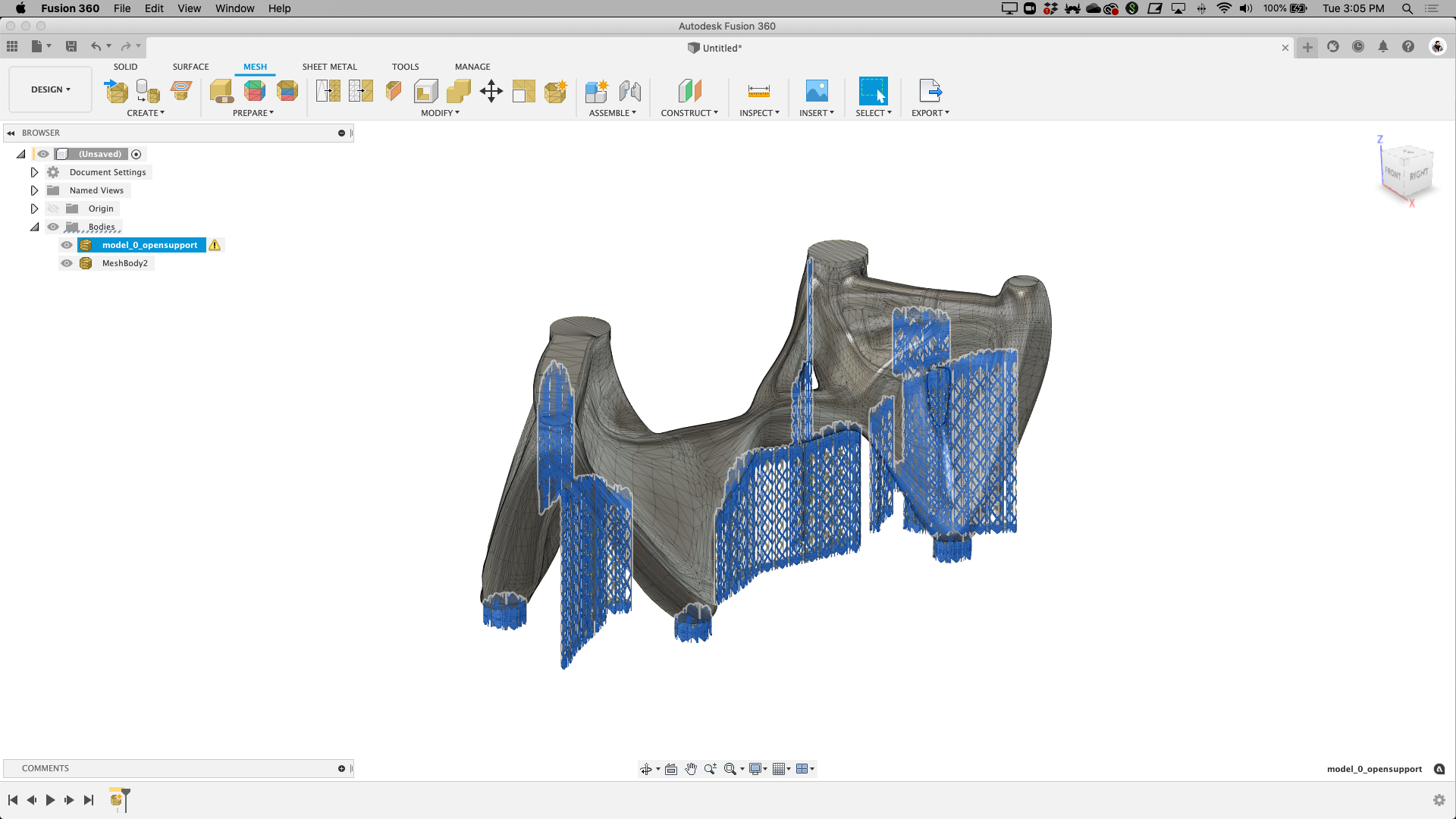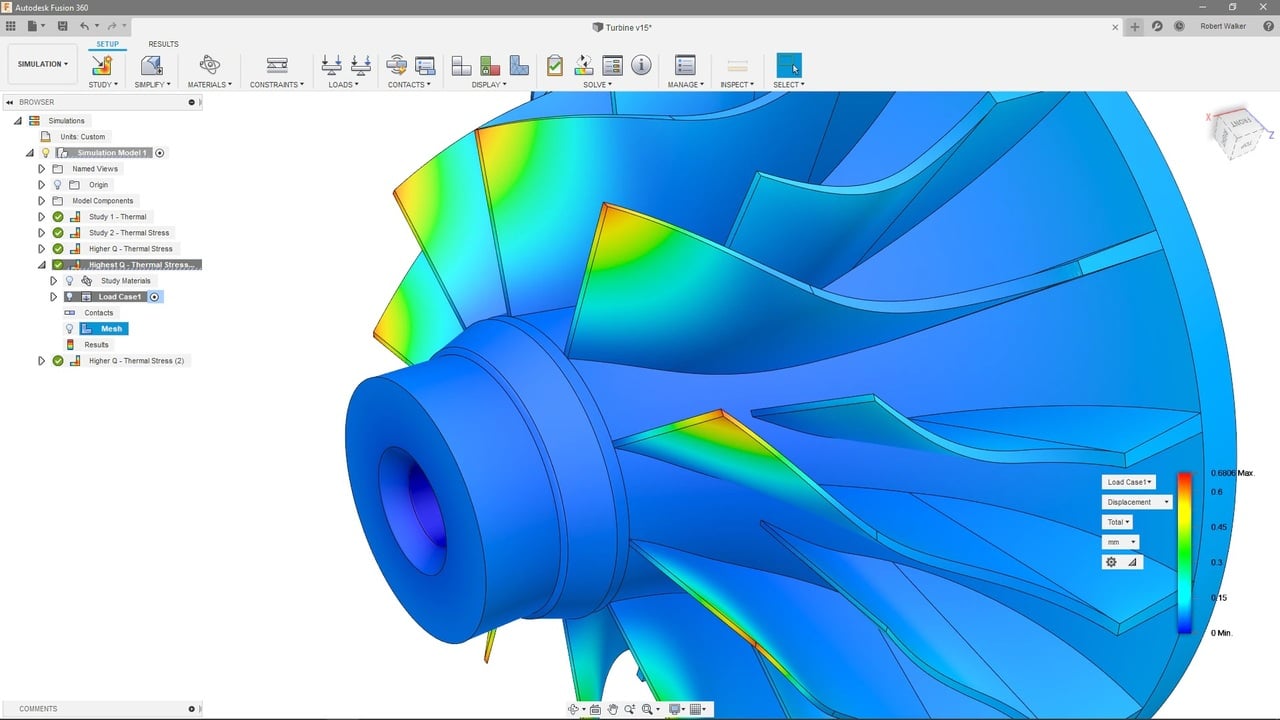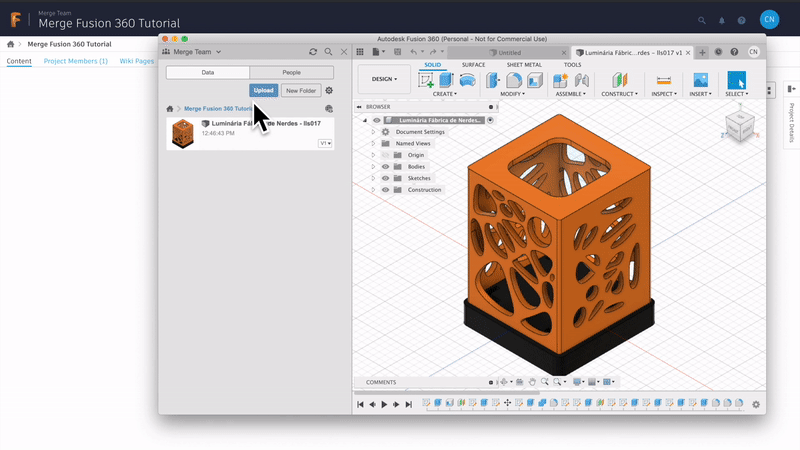
This is a brand new app, and one we’re quite excited about.
AUTODESK FUSION 360 FILE FORMATS FREE
T o celebrate this launch, we’ve teamed up with Samtec, a global manufacturer of interconnect solutions, to offer Fusion 360 customers free requests for CAD models of any Samtec parts that aren’t yet available, made available in 24 hours via our InstaPart service. If a component needed is not yet available, it can be requested. With this new app, engineers can search the SnapEDA database, in the same way they might otherwise do on our website, and then directly import from the app, or add parts to their library for future use. This means that engineers can have a completely native 3D experience when designing electronics, eliminating the need for interchange between file formats.

In fact, over 75% of engineers now use 3D models in their design process, according to the SnapEDA 2020 Annual User Survey.įusion 360 is especially interesting from that point of view because it unifies schematic capture, PCB design, library management, simulation, and mechanical design into a single development platform. Over the last few years, we’ve noticed that engineers are increasingly relying on 3D models when designing circuit boards. This new app integrates SnapEDA’s database directly within Fusion 360, enabling electronics engineers and designers to search and place millions of electronic component models directly within the Fusion 360 environment. Now you’re ready to design, Arrange, nest, machine, and more! Don’t forget to refer a friend so they can enjoy DXF Import Utility too.Today, we are pleased to announce the new SnapEDA for Autodesk ® Fusion 360 ® app. So, if you are importing other formats or have an older model with some sketch gaps, you can easily create closed profiles. This post-processor outputs toolpath files in either URScript or G-code format directly to a Universal Robot, simplifying robot programming for process.

Then, all you need to do is select the sketch with gaps to close, set the sketch gap tolerance, and click OK. In the dropdown menu, select Close Sketch Gaps. The other slightly hidden feature of the DXF Import Utility is that it can close gaps in existing sketches. Further, for nesting, assigning a material will ensure the algorithm sorts onto the appropriate sheet. This reduces what used to be several commands per DXF into one single command for batch imports. Each sketch or body is organized into its own component, just what is needed for Arrange or Nest. This workflow is especially well paired with Arrange or the Nesting and Fabrication Extension. Edit the eXtrusion feature in the timeline for fine control of resultant bodies. If something went awry with how a part was extruded, you can simply edit the timeline feature. The timeline also populates with any imports and extrudes. Once the DXF Import Utility is done, you should see your resultant sketches, sketch, or bodies all inside of Fusion 360. Based on the source of your DXFs, export settings, and the variety of standards across the industry, you may need to play around with the settings to find what works best. But, this could also cause problems on solid parts with bend lines. DXFs with multiple layers might extrude more successfully if you select Combine to Single Sketch. If you opted for extrusion, Fusion 360 will attempt to extrude each sketch to the specified thickness. In terms of exporting the project, Solidworks has an advantage over Fusion 360 as it supports 14 formats. They will automatically place themselves based on the part spacing and the number of rows. With Solidworks, you can import around 21 types of files whereas Fusion 360 allows you to import 23 types of files. Once you click OK, the DXFs will start appearing in the Fusion 360 canvas.

Some highlights include arrangement into rows, closing sketch gaps, automatic extrusion, and text import. Great for exporting to AutoCAd but otherwise useless. Does not retain any parametric elements: DWG: Autodesk AutoCAD file format.

Next, a dialog box appears where you can customize the import settings. Only usable by Fusion 360 and Inventor 2019: STEP.step is an open CAD format and should be usable in any CAD software. Click on the icon and follow the prompt to select the DXFs you’d like to import from your hard drive. The DXF Import Utility appears in the Tools section of the toolbar in the Design workspace.


 0 kommentar(er)
0 kommentar(er)
